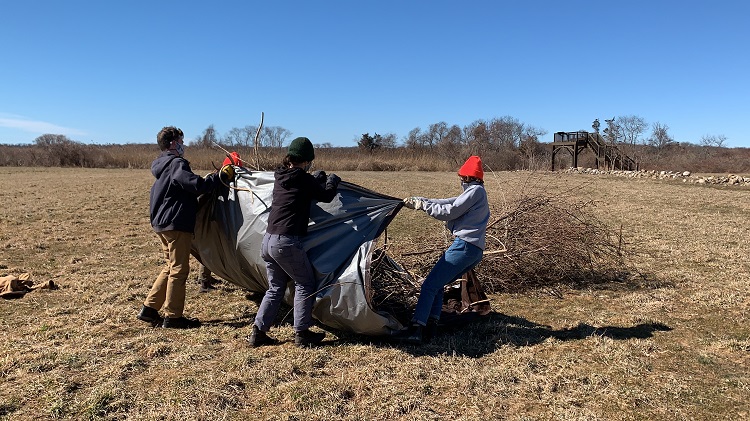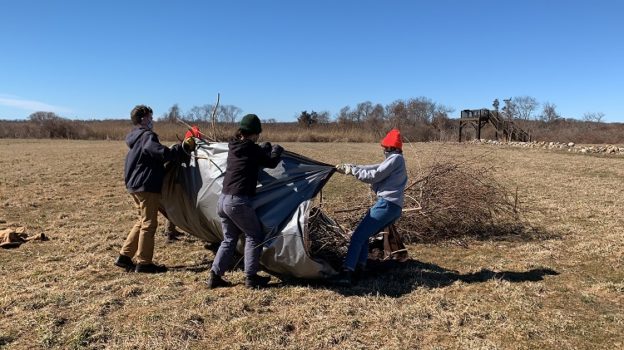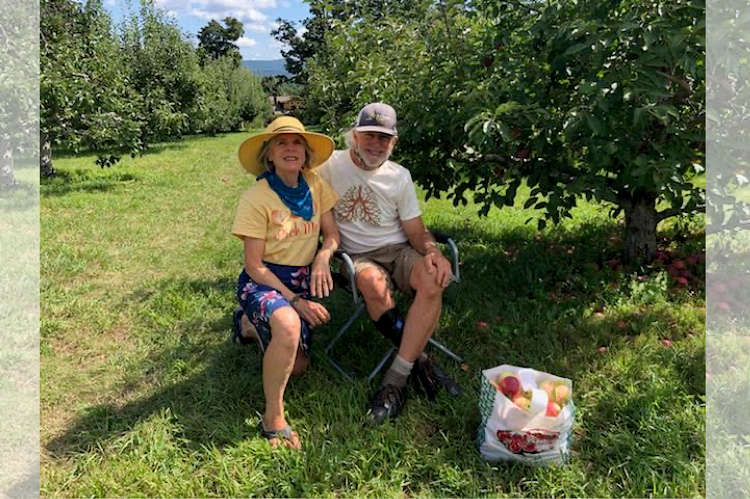
When we look to nature, we can find many ways to adapt to and mitigate climate change. Restoring nature so it can perform these services is, in part, how Mass Audubon acts on climate. Wetland restoration work being done on the South Coast is a prime example.
On February 15, Dartmouth Natural Resources Trust (DNRT) and Mass Audubon’s TerraCorps members, staff, and volunteers spent the day achieving this goal by removing invasive plant species on DNRT’s Ocean View Farm Reserve (neighboring Mass Audubon’s Allens Pond Wildlife Sanctuary). This effort is under the recently awarded Southeast New England Program (SNEP) Watershed Grant. SNEP Watershed Grants are funded by the U.S. Environmental Protection Agency (EPA) through a collaboration with Restore America’s Estuaries (RAE).
The Big Deal about Invasive Species
Invasive species are known for their ability to easily spread past their native habitats — either by accident, opportunity, or purposeful introduction — and establish themselves into new habitats. Upon their arrival, these species tend to out-compete native flora or fauna for resources. This can cascade into a variety of consequences such as already vulnerable wildlife losing critical food sources or homes.
Why Wetlands?
Wetlands are our first line of defense when it comes to withstanding climate impacts like flooding, which we are now seeing more of due to sea level rise and an increase in the frequency of extreme weather events. Not to mention, healthy wetlands (like a salt marsh) store more carbon per unit area than some of Massachusetts’ forests, helping us mitigate climate change at the same time.
But wetlands also need to be able to adapt to climate change’s impacts. As tides creep further up our shores, flood and salt intolerant wildlife move upland as a response. An abundance of invasive species inhibits how well native plants (and their accompanying animals) can migrate landward.
Staff and Volunteers at Work
Following COVID-19 public health guidelines and armed with loppers, handsaws, and chainsaws, staff and volunteers worked together to remove invasive species such as Autumn Olive, Multiflora Rose, and Bush Honeysuckle.
The invasive brush must be cut from the ground to enhance Ocean View Farm Reserve’s ability to act as a wetland buffer, or an area with plants that helps protect the wetland and all its climate services. Volunteers stacked the cut brush on tarps and pulled the brush over 100 yards to a suitable area for disposal.
The job doesn’t end with invasive species removal, however. Staff and volunteers then began planting native grasses and flowers that are both salt and flood tolerant. As sea levels rise, these actions will help facilitate wildlife and habitat movement landward as a response.
The Bigger Picture
The work is tedious and grueling, and relies on the dedication of staff and volunteers to restoring nature and protecting our world from climate change. Invasive species removal is just one component of the grant, which funds a variety of other science and restoration activities at Mass Audubon Great Neck and Allens Pond Wildlife Sanctuaries.
All these initiatives are designed to better understand how sea level rise impacts our coastal wetlands, how to protect these habitats from climate change (and therefore the wildlife and human communities surrounding them), and how to model broader climate resilience efforts in the region.
Thank you to our partners DNRT and TerraCorps for their collaboration on this project, Home Depot for donating tarps for our staff and volunteers to use during removals, and all the Mass Audubon and DNRT volunteers who lent their time and efforts to the project.




